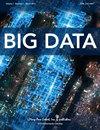基于机器学习方法的广播领域推文主题分类
IF 2.6
4区 计算机科学
Q2 COMPUTER SCIENCE, INTERDISCIPLINARY APPLICATIONS
引用次数: 0
摘要
Twitter是拥有数百万日用户的微博网站之一。广播公司使用Twitter来分享短消息,以参与或分享对特定主题或产品的看法。由于Twitter上有大量的对话,很难确定广播领域的主题类别。本文提出使用无监督学习,利用潜在狄利克雷分配(latent Dirichlet allocation, LDA)方法从广播域的未标记推文数据集生成主题。大约产生了六组主题,每组都分配了一个标签或类别。这些标签通过在每条tweet中找到占主导地位的标签作为主要类别来标记数据。采用监督学习方法训练了多项逻辑回归、XGBoost、决策树、随机森林、支持向量机和多层感知机(MLP) 6个机器学习模型。这些模型能够从数据中学习,从测试数据中预测每条推文的类别。采用精度和f1评分对模型进行评价。与其他训练模型相比,线性支持向量机和MLP获得了更好的分类效果。本文章由计算机程序翻译,如有差异,请以英文原文为准。
Topic Classification of Tweets in the Broadcasting Domain using Machine Learning Methods
Twitter is one of the microblogging sites with millions of daily users. Broadcast companies use Twitter to share short messages to engage or share opinions about a particular topic or product. With a large number of conversations available on Twitter, it is difficult to identify the category of topics in the broadcasting domain. This paper proposes the use of unsupervised learning to generate topics from unlabelled tweet data sets in the broadcasting domain using the latent Dirichlet allocation (LDA) method. Approximately six groups of topics were generated and each group was assigned a label or category. These labels were used to label the data by finding the dominating label in each tweet as the main category. Supervised learning was conducted to train six machine learning models which are multinomial logistic regression, XGBoost, decision trees, random forest, support vector machines, and multilayer perceptron (MLP). The models were able to learn from the data to predict the category of each tweet from the testing data. The models were evaluated using accuracy and the f1 score. Linear support vector machine and MLP obtained better classi-fication results compared to other trained models.
求助全文
通过发布文献求助,成功后即可免费获取论文全文。
去求助
来源期刊

Big Data
COMPUTER SCIENCE, INTERDISCIPLINARY APPLICATIONS-COMPUTER SCIENCE, THEORY & METHODS
CiteScore
9.10
自引率
2.20%
发文量
60
期刊介绍:
Big Data is the leading peer-reviewed journal covering the challenges and opportunities in collecting, analyzing, and disseminating vast amounts of data. The Journal addresses questions surrounding this powerful and growing field of data science and facilitates the efforts of researchers, business managers, analysts, developers, data scientists, physicists, statisticians, infrastructure developers, academics, and policymakers to improve operations, profitability, and communications within their businesses and institutions.
Spanning a broad array of disciplines focusing on novel big data technologies, policies, and innovations, the Journal brings together the community to address current challenges and enforce effective efforts to organize, store, disseminate, protect, manipulate, and, most importantly, find the most effective strategies to make this incredible amount of information work to benefit society, industry, academia, and government.
Big Data coverage includes:
Big data industry standards,
New technologies being developed specifically for big data,
Data acquisition, cleaning, distribution, and best practices,
Data protection, privacy, and policy,
Business interests from research to product,
The changing role of business intelligence,
Visualization and design principles of big data infrastructures,
Physical interfaces and robotics,
Social networking advantages for Facebook, Twitter, Amazon, Google, etc,
Opportunities around big data and how companies can harness it to their advantage.
 求助内容:
求助内容: 应助结果提醒方式:
应助结果提醒方式:


